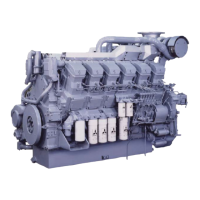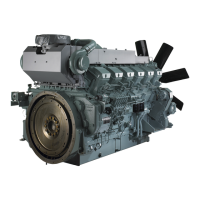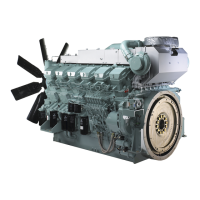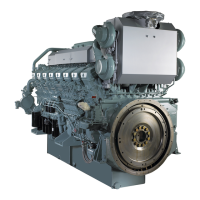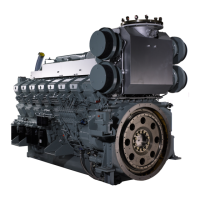Chapter 3 OPERATION
3-6
Electrical Systems
Checking Battery
If electrolyte is spilled on the eyes, skin or clothes, wash immediately with plenty of water. If electrolyte enters
the eyes, flush immediately with lots of fresh water and see a physician.
Do not use flames near the battery. When handling the battery, be careful of sparks generated by accidental
shorting.
Regarding other cautions in handling the battery, refer to "Caution Service Battery" (1-5).
Electrolyte level
Electrolyte evaporates during use and the fluid level
gradually decreases. The fluid surface should be
between the LOWER LEVEL and UPPER LEVEL lines.
If there are no level lines on the battery, make sure that
the fluid surface is about 10 to 15 mm [0.394 to 0.591
in.] above the top edges of the plate. If the fluid level is
lower, remove the caps and add distilled water to the
proper level.
Note: When pouring fresh electrolyte, pour the fluid
carefully.
Checking specific gravity of electrolyte
Check the specific gravity of the electrolyte. If the spe-
cific gravity measured at 20 °C [68 °F] is lower than
1.22, then charge the battery.
Checking loosened wire
Check the faulty wire connection for other parts of the
electrical system and the battery terminal.
Table 3-1 Specific gravity of electrolyte
Specific gravity
at 20°C [68°F]
Condition Remedy
From 1.26 to
1.28
Fully
charged
-
From 1.22 to
1.26
Charged Charge
Less than 1.22 Discharged Charge
fig.3-13 Inspecting electrolyte level
U
P
P
E
R
L
O
W
E
R
L
E
V
E
L
L
E
V
E
L
10 to15 mm
(0.394 to 0.591 in.)
Proper
level
fig.3-14 Inspecting specific gravity of electrolyte
Float
Electrolyte
level
Glass pipe
Electrolyte
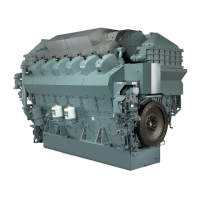
